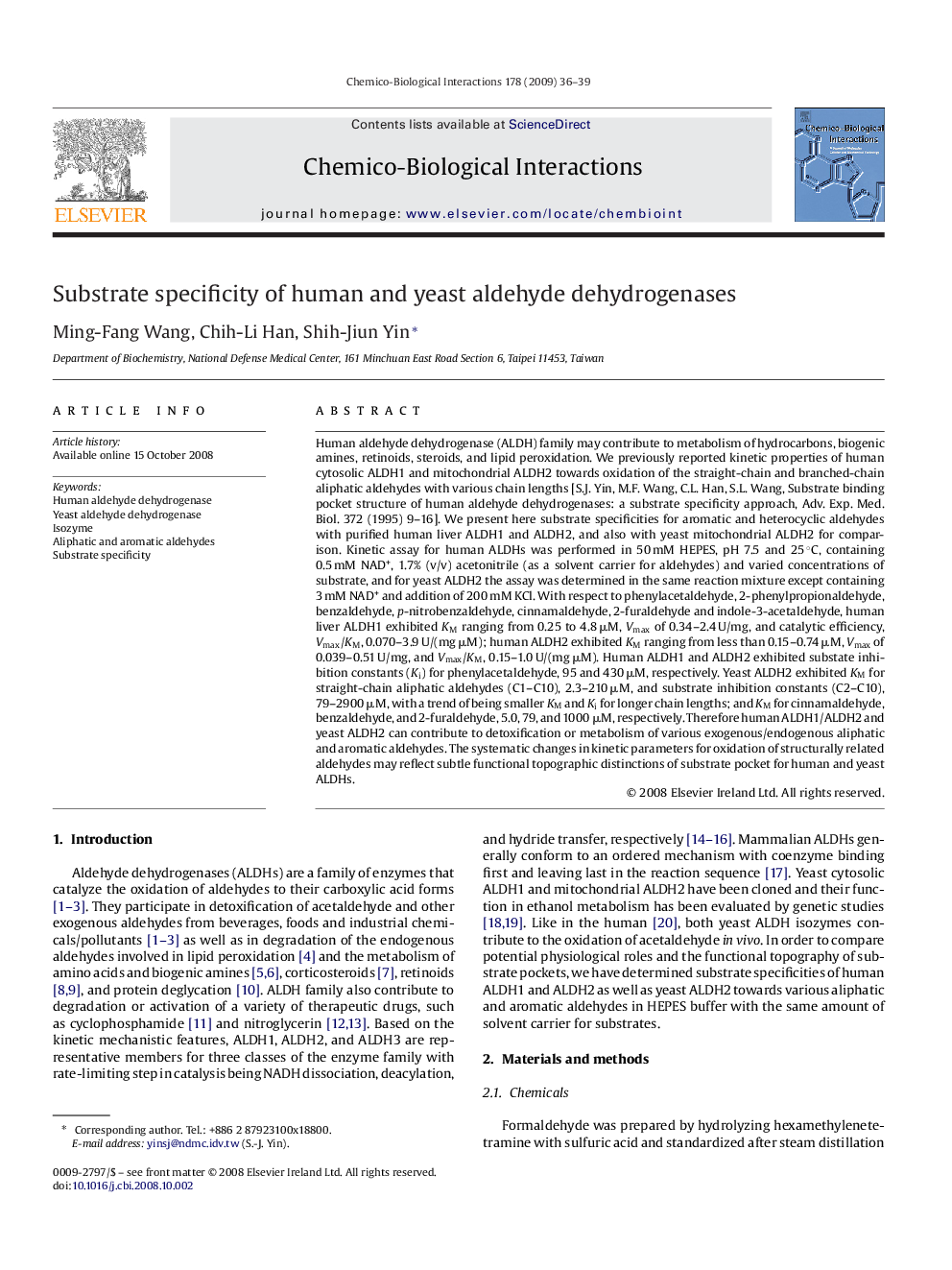| Article ID | Journal | Published Year | Pages | File Type |
|---|---|---|---|---|
| 2582318 | Chemico-Biological Interactions | 2009 | 4 Pages |
Human aldehyde dehydrogenase (ALDH) family may contribute to metabolism of hydrocarbons, biogenic amines, retinoids, steroids, and lipid peroxidation. We previously reported kinetic properties of human cytosolic ALDH1 and mitochondrial ALDH2 towards oxidation of the straight-chain and branched-chain aliphatic aldehydes with various chain lengths [S.J. Yin, M.F. Wang, C.L. Han, S.L. Wang, Substrate binding pocket structure of human aldehyde dehydrogenases: a substrate specificity approach, Adv. Exp. Med. Biol. 372 (1995) 9–16]. We present here substrate specificities for aromatic and heterocyclic aldehydes with purified human liver ALDH1 and ALDH2, and also with yeast mitochondrial ALDH2 for comparison. Kinetic assay for human ALDHs was performed in 50 mM HEPES, pH 7.5 and 25 °C, containing 0.5 mM NAD+, 1.7% (v/v) acetonitrile (as a solvent carrier for aldehydes) and varied concentrations of substrate, and for yeast ALDH2 the assay was determined in the same reaction mixture except containing 3 mM NAD+ and addition of 200 mM KCl. With respect to phenylacetaldehyde, 2-phenylpropionaldehyde, benzaldehyde, p-nitrobenzaldehyde, cinnamaldehyde, 2-furaldehyde and indole-3-acetaldehyde, human liver ALDH1 exhibited KM ranging from 0.25 to 4.8 μM, Vmax of 0.34–2.4 U/mg, and catalytic efficiency, Vmax/KM, 0.070–3.9 U/(mg μM); human ALDH2 exhibited KM ranging from less than 0.15–0.74 μM, Vmax of 0.039–0.51 U/mg, and Vmax/KM, 0.15–1.0 U/(mg μM). Human ALDH1 and ALDH2 exhibited substate inhibition constants (Ki) for phenylacetaldehyde, 95 and 430 μM, respectively. Yeast ALDH2 exhibited KM for straight-chain aliphatic aldehydes (C1–C10), 2.3–210 μM, and substrate inhibition constants (C2–C10), 79–2900 μM, with a trend of being smaller KM and Ki for longer chain lengths; and KM for cinnamaldehyde, benzaldehyde, and 2-furaldehyde, 5.0, 79, and 1000 μM, respectively. Therefore human ALDH1/ALDH2 and yeast ALDH2 can contribute to detoxification or metabolism of various exogenous/endogenous aliphatic and aromatic aldehydes. The systematic changes in kinetic parameters for oxidation of structurally related aldehydes may reflect subtle functional topographic distinctions of substrate pocket for human and yeast ALDHs.
